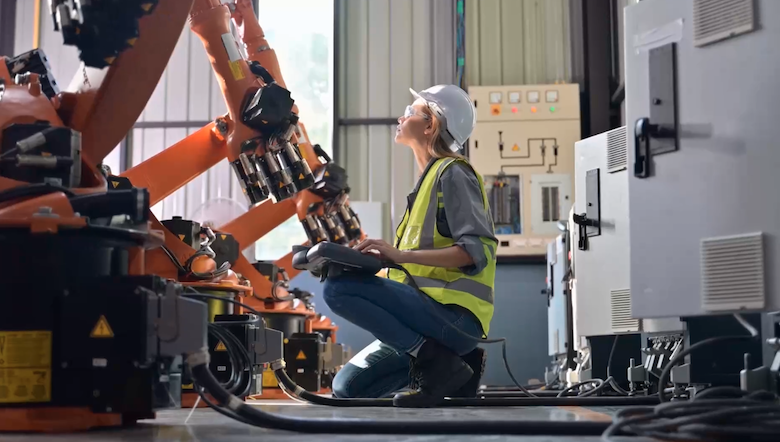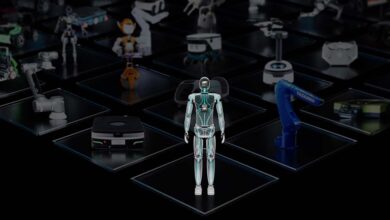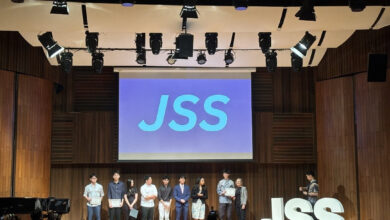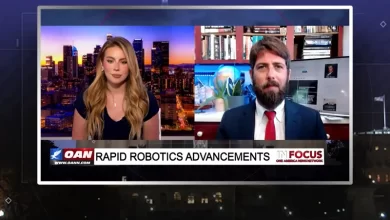The Impact of AI and Robotics in Manufacturing – Robotics & Automation News

In the vast and complex world of manufacturing, the advent of Artificial Intelligence (AI) and robotics marks a significant turning point. This revolutionary technology duo is not just enhancing efficiency and productivity; it’s redefining the very essence of manufacturing processes.
From the assembly lines of automotive giants to the delicate operations in electronics manufacturing, AI and robotics are playing pivotal roles. Among the myriad of advancements, the integration of motors and servo drives with AI and robotics stands out, offering precise control and movement that was once unimaginable.
Revolutionizing Production with Precision and Efficiency
The introduction of robotics in manufacturing isn’t new, but the integration of AI has catapulted their capabilities to new heights. Robots, powered by AI algorithms, can now learn, adapt, and make decisions, leading to unprecedented levels of automation.
The inclusion of motor drives, like the SL3000, in robotic systems enables precise control over movement, essential for tasks requiring high accuracy. This precision is crucial in industries where the slightest deviation can compromise product quality, such as in semiconductor manufacturing or automotive assembly.
AI-driven robotics equipped with advanced motors and servo drives can perform complex assembly tasks, reduce material waste, and ensure consistent product quality.
Moreover, these robots can operate 24/7, significantly increasing production capacity without the need for breaks or shifts, thus dramatically enhancing overall efficiency.
Customization and Flexibility at Scale
One of the most significant impacts of AI and robotics in manufacturing is the ability to offer customization at scale. Traditionally, manufacturing lines were designed for mass production, focusing on producing large quantities of identical items.
However, market demands are shifting towards personalized products, and AI and robotics are at the forefront of meeting these demands.
Robotic systems, guided by AI and powered by precise motors and servo drives, can quickly switch between tasks, adapting production lines to manufacture customized products without significant downtime.
This flexibility allows manufacturers to respond swiftly to market trends and customer preferences, offering a competitive advantage in an increasingly dynamic marketplace.
Enhancing Worker Safety and Reducing Repetitive Tasks
AI and robotics also play a crucial role in enhancing worker safety and reducing the burden of repetitive and physically demanding tasks. Robots can perform dangerous tasks, such as handling hazardous materials or operating in unsafe conditions, thereby reducing the risk of accidents and injuries.
Moreover, by automating repetitive tasks, workers can focus on more complex and intellectually stimulating aspects of manufacturing, leading to increased job satisfaction and productivity.
The precision of robotic systems, especially those utilizing advanced motors and servo drives, ensures that these tasks are performed with greater accuracy and consistency, further enhancing safety and efficiency on the factory floor.
Challenges and Considerations
Despite the myriad benefits, the integration of AI and robotics in manufacturing presents several challenges. The initial cost of implementing robotic systems, especially those equipped with state-of-the-art motors and servo drives, can be significant.
Small and medium-sized enterprises (SMEs) may find it particularly challenging to make such investments without assurance of immediate returns.
Moreover, the integration of AI and robotics requires a skilled workforce capable of designing, maintaining, and overseeing these systems.
The current skills gap in manufacturing poses a challenge to the widespread adoption of these technologies. Manufacturers must invest in training and development to equip their workforce with the necessary skills.
Another consideration is the impact on employment. While AI and robotics can enhance efficiency and productivity, there are concerns about job displacement.
It’s essential for manufacturers to consider how to transition workers into new roles that complement robotic systems, ensuring that the workforce evolves alongside technological advancements.
The Road Ahead: Navigating the Future of Manufacturing
The integration of AI and robotics, particularly with advanced motors and servo drives, is set to continue transforming the manufacturing industry.
As technology advances, robotic systems will become more intelligent, adaptable, and capable of performing increasingly complex tasks. This evolution will further enhance efficiency, customization, and safety in manufacturing processes.
Manufacturers must navigate these changes by investing in technology, training, and strategic planning to fully harness the benefits of AI and robotics. Embracing these advancements offers a pathway to not only survive but thrive in the competitive landscape of modern manufacturing.
In conclusion, the impact of AI and robotics in manufacturing is profound, offering a new paradigm of precision, efficiency, and flexibility.
By overcoming the challenges and embracing the opportunities this technology presents, manufacturers can secure their place in the future of the industry, where AI and robotics, powered by motors and servo drives, are integral to success.



